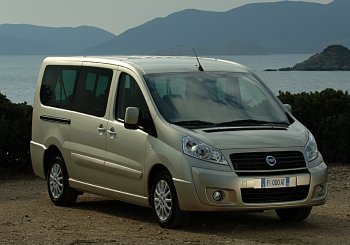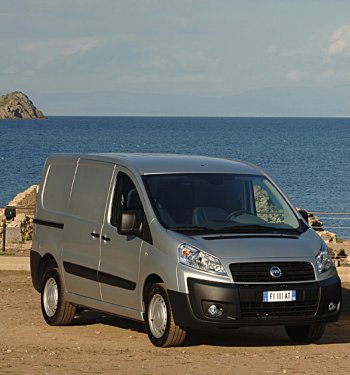|
Powerful,
elastic, economical engines
|
|
Comfort on the
road also means being able to count on sparkling engines
with a smooth torque delivery. Since it was launched, the
Scudo has always offered a comprehensive choice of engines
which have been constantly updated. Today the New Scudo
range is available with three Multijet engines that
guarantee extremely enjoyable driving (and outstanding
elasticity), superb performance and low running costs
(consumption and maintenance), as well as reliability and
respect for the environment.
The following engines are available, combined with sturdy,
reliable 5 or 6-speed gearboxes: 1.6 90 Multijet (5
speeds); 2.0 120 Multijet (6 speeds) and 2.0 140 Multijet
Power (6 speeds). Achieving a perfect balance between power
and consumption in all types of mission and load conditions,
the New Scudo equipped with the 90 Multijet – maximum power
output of 66 kW (90 bhp) at 4000 rpm and peak torque of 180
Nm at 1750 rpm – has a top speed of 145 km/h and fuel
consumption of 7.2 l/100 km in the combined cycle.
The performance of the two variable geometry two litre
engines is also excellent: the 140 bhp version takes the New
Scudo to a top speed of 170 km/h, with fuel consumption of
just 7.4 l/100 km in the combined cycle (the same values are
160 km/h and 7.2 l/100 km for the 120 bhp versions). The 2.0
120 Multijet delivers a maximum of 88 kW (120 bhp) at 4000
rpm (peak torque of 300 Nm at 2000 rpm), while the 2.0 140
Multijet delivers 100 kW (136 bhp) at 4000 rpm and torque of
320 Nm at 2000 rpm.
|
 |
|
 |
|
The secret of
the three Common Rail turbodiesels is the second generation
Multijet system; this is the state-of-the-art technology
that manages high injection pressure (up to 1600 bar)
independently of the engine speed and the quantity of fuel
injected. Compression is not linked only to engine speed but
to several parameters which are communicated to the control
unit by specific sensors (air and diesel fuel temperature,
engine revs, position of the accelerator, brake and clutch
pedals, vehicle speed, air and diesel oil pressure).
The key element of this system is the electronic control
unit, which commands a series of injections very close
together (hence the name ‘Multijet’). During each engine
cycle, there may be as many as 5 injections instead of the
usual two. Inside the cylinder, the same quantity of diesel
fuel is burned, but it is broken down into numerous small
bursts, making combustion more gradual. This guarantees
‘smoother’ operation in all use situations, outstanding
elasticity and prompt reactions that make these engines very
similar to petrol engines. The other advantages include
quiet operation, reduced emissions and boosted performance,
accompanied by engine efficiency that improves the
driveability of the vehicle.
|
|